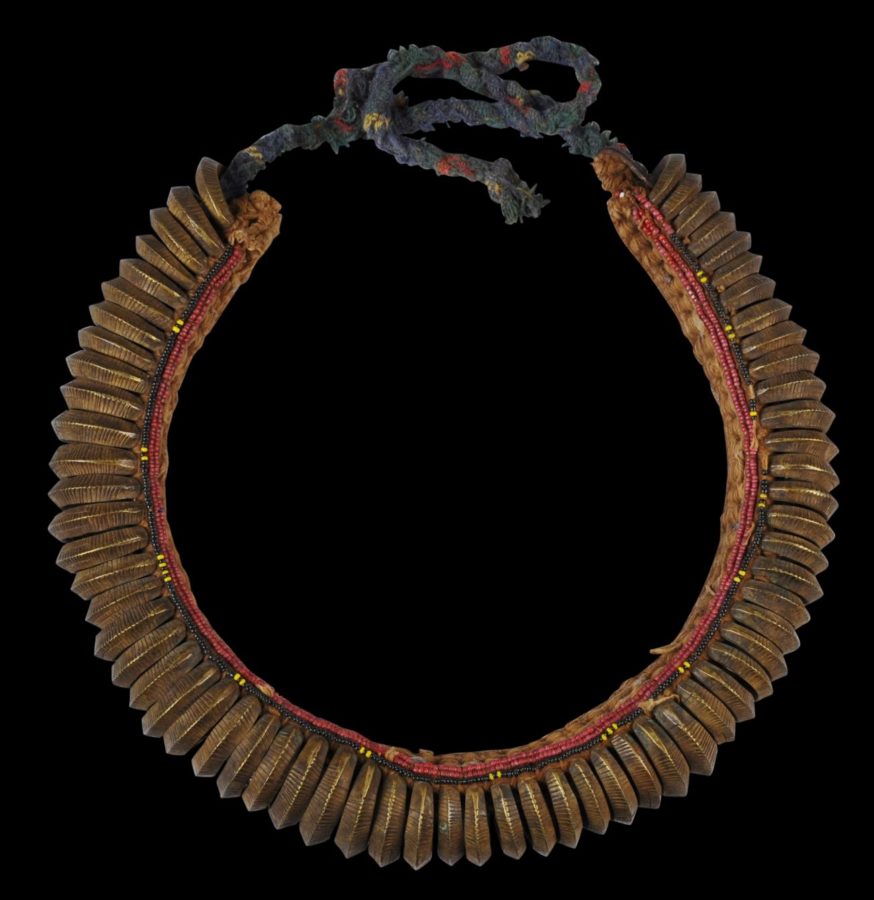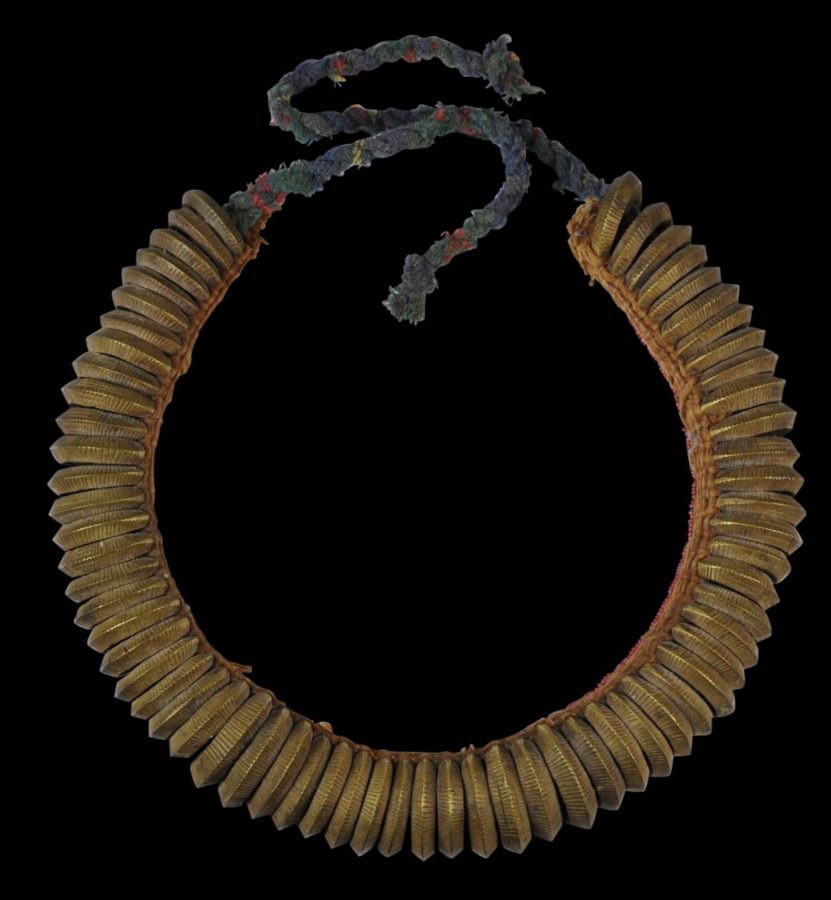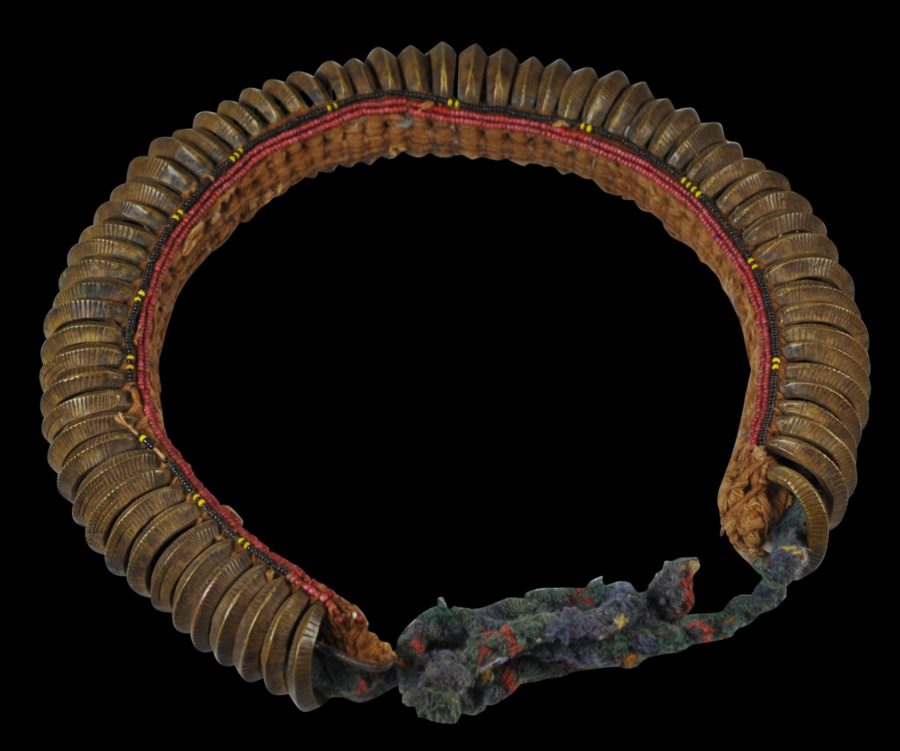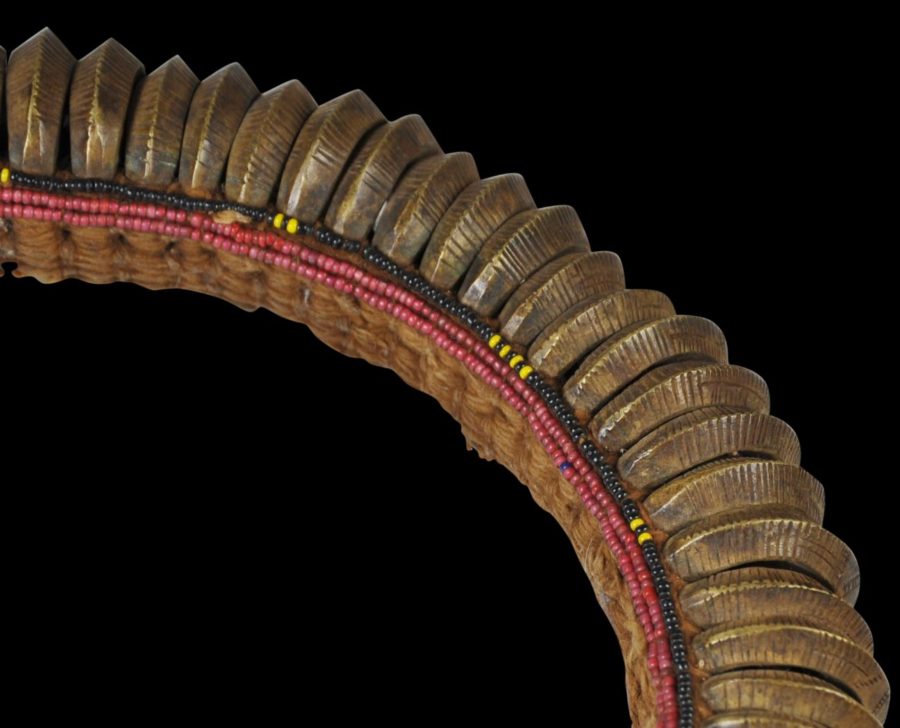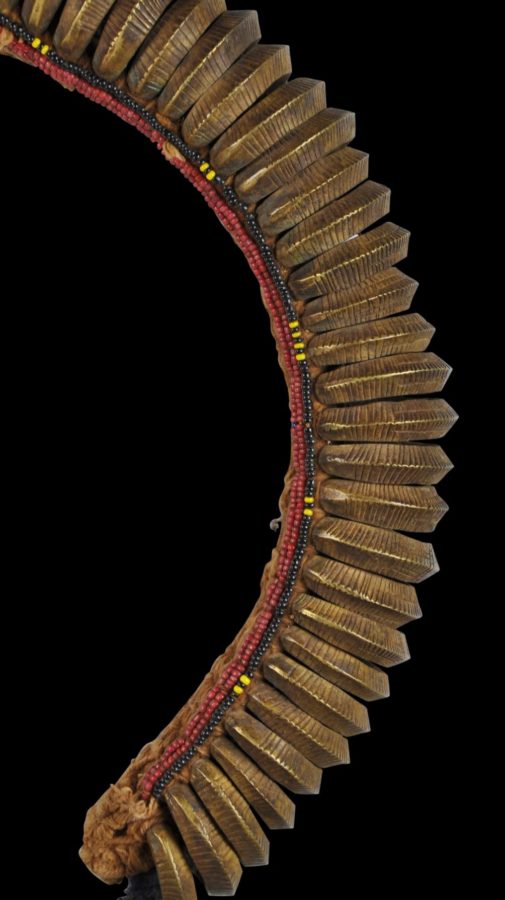This remarkable, museum-quality necklace which came from a UK-based collection of other Borneo artefacts has few or no parallels with other examples of Dayak necklaces of which we know, either published or otherwise.
It comprises 64 cast and incised brass rings, each of which is cast with upper and lower flattened contours which join as a ridge running around the outer middle of each ring. (Invernizzi Tettoni & Ong, 1996, p. 203 illustrate an early black and white photograph of three Iban chiefs two of which are wearing brass bracelets of similar form.)
The rings are connected to one another as a necklace by having been threaded into woven native cotton twine, and this is supported by a single section of wire that is embedded into the woven cotton binding.
The inner outward-facing edge of the necklace is further decorated with three fine strands of tiny red black and yellow trade beads.
Included among the beads are small red-white heart trade beads of a type that were produced in Venice prior to around 1880, this helping to date the necklace.
Purple and red-dyed twine twisted into a rope has been threaded through rings and emerges at each end to complete the necklace so that it can be tied around the neck.
The weight and magnificence of this necklace suggest that it was made to be worn by a particularly high-raking male.
Beads were of immense importance to the Dayaks and other peoples of Borneo. They were heirloom and prestige items worn as a sign of rank, wealth and power. They were imported from around the world by local agents, and often were used as a type of currency in barter exchange. Guides liked to be paid in beads and fines could even be paid with beads.
The provenance, the manner of brass casting, and the manner of construction using the cotton twine and the decorative bead edging marks this necklace out as of Dayak workmanship rather than say African.
The necklace is in excellent condition.
References
Chin, L., Cultural Heritage of Sarawak, Sarawak Museum, 1980.
Invernizzi Tettoni, L. & E. Ong, Living in Sarawak, Thames & Hudson, 1996.
Munan, H., Beads of Borneo, Editions Didier Millet, 2005.


